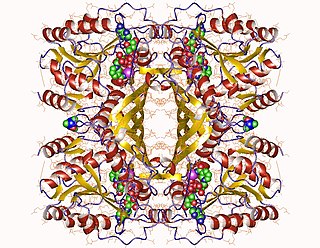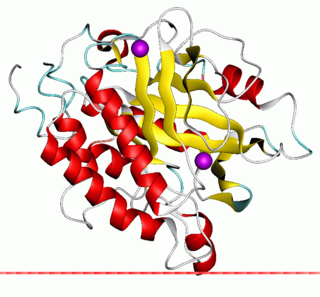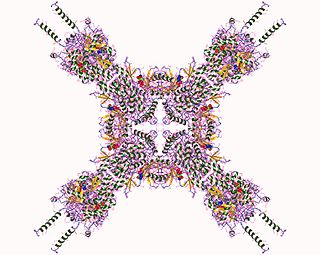| glycerophosphoinositol inositolphosphodiesterase | |||||||||
|---|---|---|---|---|---|---|---|---|---|
| Identifiers | |||||||||
| EC no. | 3.1.4.43 | ||||||||
| CAS no. | 9076-91-9 | ||||||||
| Databases | |||||||||
| IntEnz | IntEnz view | ||||||||
| BRENDA | BRENDA entry | ||||||||
| ExPASy | NiceZyme view | ||||||||
| KEGG | KEGG entry | ||||||||
| MetaCyc | metabolic pathway | ||||||||
| PRIAM | profile | ||||||||
| PDB structures | RCSB PDB PDBe PDBsum | ||||||||
| Gene Ontology | AmiGO / QuickGO | ||||||||
| |||||||||
The enzyme glycerophosphoinositol inositolphosphodiesterase (EC 3.1.4.43) [1] [2] [3] [4] is an enzyme that catalyzes the chemical reaction
- 1-(sn-glycero-3-phospho)-1D-myo-inositol + H2O glycerol + 1D-myo-inositol 1-phosphate
This enzyme belongs to the family of hydrolases, specifically those acting on phosphoric diester bonds. The systematic name is 1-(sn-glycero-3-phospho)-1D-myo-inositol inositolphosphohydrolase. Other names in common use include 1,2-cyclic-inositol-phosphate phosphodiesterase, D-myo-inositol 1:2-cyclic phosphate 2-phosphohydrolase, D-inositol 1,2-cyclic phosphate 2-phosphohydrolase, D-myo-inositol 1,2-cyclic phosphate 2-phosphohydrolase, 1-D-myo-inositol-1,2-cyclic-phosphate 2-inositolphosphohydrolase, and inositol-1,2-cyclic-phosphate 2-inositolphosphohydrolase.
This enzyme 1-D-myo-inositol-1,2-cyclic-phosphate 2-inositolphosphohydrolase, was reported to be identical to annexin III. [5] Sekar and co-workers [6] clearly demonstrated the dissociation of 1-D-myo-inositol-1,2-cyclic-phosphate 2-inositolphosphohydrolase activity from annexin III. Perron and co-workers confirmed on the basis of structural studies that annexin III did not possess an enzymatic activity. [7] While the physiological significance of this enzymatic activity is still not clear, Sekar et al. [Biochem. Mol. Med. 61:95-100, 1007] reported over 10-fold increased release of this enzymatic activity in several patients admitted to the hospital's intensive care unit. [8]







